Granny used to be a farmer. She and dad had a small farm and grew most of their food. They bought flour, coffee, and sugar, but most other foods had come from the farm. She also had a medicinal garden and grew her medicines. I don’t remember her going to the doctor; but I’m sure she did it for serious illnesses.
Her medicinal garden encompassed those five plants that she believed in. She also used garlic, onion, and other herbs that she grew in her vegetable garden. These five were only grown for medicinal use, and she taught me how to use them, too. They constituted the basis of our daily medicine.
St. John’s Wort
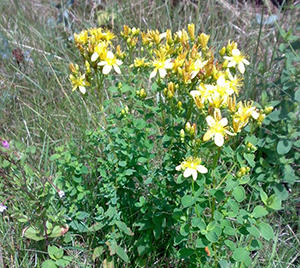
Granny grew St. John’s Wort because of menstrual cramping and menopause symptoms. She would make a tea from the leaves, and drink it three times a day for symptoms. As she grew older she began to use the tea and topical oil for neuralgia nerve pain, muscle pain, back pain and body aches.
She also whispered to me that it was good for hemorrhoids, reducing inflammation and pain.
As she got older, my grandmother began using St. John’s Wort to treat arthritis, gout and rheumatism. As before, she drank the tea, two or three times a day, every day. Over time, its pain diminished considerably.
St. John’s Wort has powerful anti-inflammatory properties which treat chest congestion, speeds infection healing, including colds and flu.
Additional uses of the herb are known to include: removing fluids and detoxifying the body, treating bedwetting in infancy, and reducing blood pressure problems. It is also reported to aid in mild opiate withdrawal symptoms.
Aloe Vera
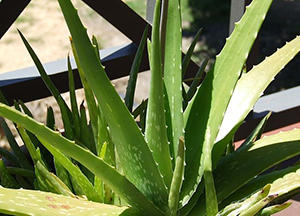
My grandmother grew an aloe vera stand at a corner of her farm in Georgia. She would make sure I had a pot to take home every time I visited. Throughout the years, I’ve repeatedly used the gelatinous sap for sunburns, burns, skin abrasions and wounds, and other skin problems.
Aloe vera is also nutritious, and can be used to soothe the digestive tract internally. Use it with meals to relieve reflux and heartburn, or using water to relieve cramping, flatulence, and pain in the abdomen. It’s a natural laxative as well, therefore, you should start with small doses.
In diabetics, the plant is reported to lower blood sugar by taking just 2 tablespoons of the juice or pulp. I haven’t tried it for that purpose, but if I were diabetic I would certainly try it.
Related: 5 Home Remedies for Diarrhea
Peppermint
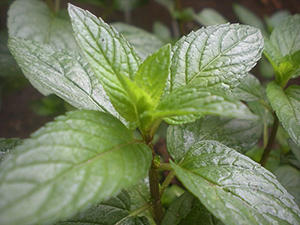
Granny loved peppermint. I believe this was her favorite herb. Sometimes, she would just take a sprig and eat it. The trick is to plant it in damp, rich soil and keep it damp but not wet.
Granny also used peppermint for indigestion, stomach aches, flatulence, digestive issues, and hepatic issues. Throughout the day she will be sipping on peppermint tea for stomach issues. It stimulates bile release inside the body. This also includes anti-inflammatory properties, anti-bacterial properties, and anti-viral properties that treat the causes of the disease while relaxing the tract.
Stomach and Menstrual Cramping
Peppermint oil relaxes the abdominal and uterine muscles to relieve cramping. This is effective for diarrhea treatment, spastic colon, IBS, and Crohn’s disease. To relax your bowels and stomach, sip on peppermint tea all day long.
Headaches and Migraines
Granny also used peppermint oil, 1 drop diluted in a teaspoon of olive oil, and rubbed over the painful areas on the forehead or on the scalp.
Related: The Hidden Secret of Shepherd’s Purse
Yarrow
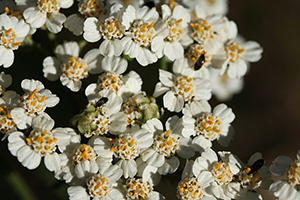
Granny used to call this plant “nosebleed plant”. This has many uses, most importantly the ability to rapidly stop bleeding. If one of us had a cut or wound, granny would sprinkle the wound with dried yarrow. She’d clean up the wound two to three times a day before it healed.
The healing properties of Yarrow spread even under the skin. She’d use it on bruises, sprains, hemorrhoids, and skin itchy.
For fevers, colds, and flu, granny would make us chew on a piece of raw yarrow root. It made us sweat, and reduced the fever. Open pores and cleanse toxins from the body are best used early in the disease.
Related: 10 Medical Home Emergencies and How to Treat Them
Evening Primrose
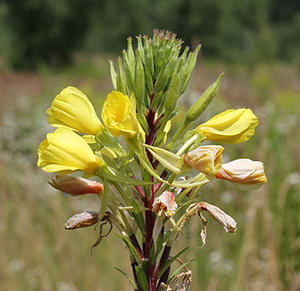
In granny’s garden, evening primrose was as much an ornamental as a medicinal plant. She grew it along the fence line where it prospered. The flowers are available only for one or two nights, closing the morning. The flowers were beautiful even if they lived short.
We were a predominantly female family, so it makes sense she would grow evening primrose. The plant is known for balancing female hormones, treating PMS symptoms, including headaches, bloating, moodiness, and acne. This is often known to be effective when it comes to managing Polycystic Ovarian Syndrome (PCOS). Women with PCOS who take evening primrose are more likely to conceive and carry a child to full term.
Granny would also use a poultice made from evening primrose root to treat skin issues including piles and wounds. It reduces inflammation and it helps heal the skin.
My grandfather swore to treat his hair loss by evening primrose oil. Every night, he rubbed the oil on his hair and felt it helped his hair grow back in as he started to go bald.
Granny has also taken evening primrose as her arthritis treatment. When taken every day, she found that it soothed her arthritis pain.
These are all the treatments which are used regularly by granny. Unfortunately, so many of us have lost that knowledge. The younger generation rolls their eyes at me when I try to tell them how to use these amazing plants. They would rather run to the doctor and take a pill. I like the natural remedies and I encourage you to learn more about them. I believe the natural remedies to be more healthful for the body when taken correctly.











